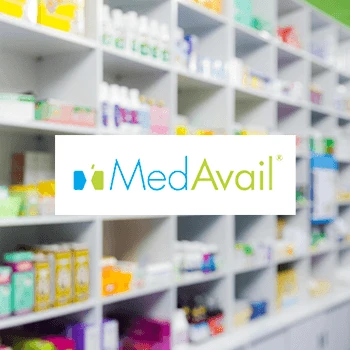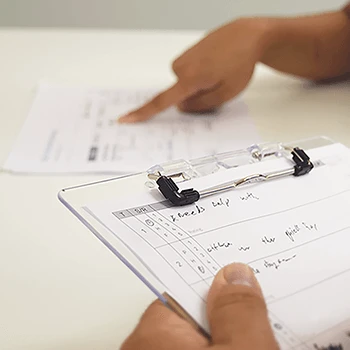What exactly is web usability testing and why does our website need it?
Web usability testing evaluates how well users can interact with your website to complete specific tasks. We test with representative end-users to uncover what users experience, measuring effectiveness, efficiency, learnability, and satisfaction. Through our Experience Thinking framework, testing reveals how your website supports brand experience, content consumption, product interaction, and service delivery.
Tip: Define specific user tasks and success criteria before testing to ensure results directly inform your business priorities.
How does Akendi's usability testing approach differ from other methods?
Our approach combines systematic evaluation with behavioral observation to prevent unusable products from reaching the marketplace. We use pragmatic techniques to identify experience gaps, understand user thinking, and make intelligent design changes. Testing integrates with our Experience Thinking framework to ensure website improvements enhance your complete experience ecosystem.
Tip: Look for testing approaches that connect usability findings to broader experience strategy rather than just fixing individual issues.
What's the difference between formative and summative usability testing?
Formative testing happens early in design to find and fix usability issues when changes are cost-effective. Users think aloud while completing tasks, providing insight into mental models. Summative testing evaluates finished designs against predefined measures, typically unmoderated with emphasis on task completion. We recommend formative testing in most cases for maximum impact.
Tip: Plan formative testing throughout design phases rather than waiting for summative testing (and UAT) at the end to minimize costly changes.
When should we conduct usability testing in our development timeline?
Testing should happen early and often, starting with paper prototypes or wireframes when changes are cheapest. Test at multiple phases including early interaction design, functional prototypes, and pre-launch validation. Early testing prevents building unusable products and provides evidence to stop opinion-based decisions that cause costly late changes.
Tip: Budget for multiple testing phases rather than one final test to maximize value and reduce development risk.
What business value does usability testing provide?
Testing increases uptake, reduces abandonment, improves brand recognition, and minimizes support calls. It provides evidence that prevents development teams from building the wrong thing and gives confidence for launch decisions. Through Experience Thinking measurement, testing validates how website improvements affect brand perception, content engagement, product success, and service delivery.
Tip: Measure baseline metrics like conversion rates and support call volume before testing to demonstrate concrete business impact.
How does foresight design influence usability testing strategy?
Foresight design helps us test not just current usability but future user expectations and emerging interaction patterns. We examine how changing user behaviors, new technologies, and evolving mental models might affect website usability over time. This forward-thinking approach ensures test insights remain valuable as user expectations evolve.
Tip: Include scenarios that test how your website might perform as user expectations change rather than just current task completion.
What makes web usability testing different from app or software testing?
Web testing considers unique browser environments, varying entry points, different screen sizes, and diverse user contexts. Website users often compare options, seek information quickly, or make one-time transactions with different expectations than app users. Testing methods adapt to capture web-specific behaviors like scanning, navigation patterns, and cross-device usage.
Tip: Test realistic web scenarios including different entry points and user contexts rather than just linear task flows.
What usability testing methods do you use for websites?
We use moderated and unmoderated testing, remote and in-person sessions, think-aloud protocols, and task-based evaluation. Method selection depends on project phase, research goals, and prototype fidelity. Early prototypes benefit from moderated sessions while mature sites need performance metrics. We combine qualitative observation with quantitative measures for comprehensive insights.
Tip: Match testing method to your specific questions and project phase rather than defaulting to the same approach every time.
How do you choose between moderated and unmoderated testing?
Moderated testing provides rich qualitative insights through think-aloud protocols and real-time observation, ideal for early design phases. Unmoderated testing captures natural behavior and performance metrics without moderator influence, better for mature products requiring task completion data. We often combine both approaches for comprehensive understanding.
Tip: Use moderated testing when you need to understand why users struggle and unmoderated testing when you need to measure how they actually perform.
What's your approach to remote versus in-person usability testing?
Remote testing enables natural environment testing and broader participant access while maintaining research quality. In-person testing provides richer observation of body language and environmental factors. For websites, remote testing often captures more realistic usage contexts since users naturally access websites from various locations and devices.
Tip: Choose remote testing for realistic context and broader reach, in-person testing when you need detailed behavioral observation.
How do you test early-stage prototypes versus live websites?
Early prototypes use usability walkthroughs and think-aloud protocols to gather feedback on design concepts and task flows. Live websites enable comprehensive task completion measurement and performance analysis. Paper prototypes test interaction concepts while functional prototypes validate actual user flows before development investment.
Tip: Test early with low-fidelity prototypes to validate concepts before investing in high-fidelity development.
What role do usability walkthroughs play in your testing approach?
Usability walkthroughs evaluate early-stage prototypes and wireframes with representative users before functional development. Users are walked through screens and asked how they would interact at each step. This validates key scenarios, reveals usability issues, and exposes system features users expect, enabling iteration when changes are still cost-effective.
Tip: Use walkthroughs to validate interaction concepts and task flows before committing to development rather than just gathering opinions on visual design.
How do you handle mobile versus desktop usability testing?
Mobile testing requires actual device testing, consideration of touch interactions, network variations, and different usage contexts. We test on real devices rather than simulators and account for environmental factors like lighting and distraction. Desktop testing examines different interaction patterns, larger screen navigation, and multi-window usage behaviors.
Tip: Test mobile experiences on actual devices in realistic lighting and network conditions rather than just desktop browser simulations.
What testing methods work best for complex web applications?
Complex applications require task analysis, scenario-based testing, and progressive disclosure evaluation. We break testing into focused modules, test multi-session workflows, and examine how users learn system patterns over time. Testing considers both novice and expert user behaviors across different application areas and integration points.
Tip: Break complex application testing into focused areas and user scenarios rather than trying to test everything simultaneously.
How many participants do you recruit for web usability testing?
We typically recruit 4-6 participants per user persona, following established research showing 5 participants reveal 85% of usability issues. For complex websites with multiple user types, we recruit across personas to capture diverse usage patterns. We often see between 2 and 5 user personas (audience segments). To further derisk the design, we recommend 7-12 participants per audience segment for more complex scenarios, balancing insight quality with budget efficiency.
Tip: Plan multiple small testing rounds rather than one large study to enable iterative improvements and better budget utilization.
How do you recruit the right participants for our website?
Recruitment starts with clear participant criteria based on your actual user base, domain expertise, and website usage patterns. We recruit through multiple channels, screen for relevant experience, and ensure participants match your target audience demographics and behaviors. Proper recruitment is crucial for valid, actionable results.
Tip: Define recruitment criteria based on actual user behaviors and website usage patterns rather than just demographic characteristics.
What participant screening process do you use?
Screening involves questionnaires covering demographics, domain knowledge, technology comfort, and website usage experience. We verify participants match study requirements, have appropriate technical setup for remote testing, and can complete tasks within testing timeframes. Screening questions avoid leading responses while ensuring participant relevance.
Tip: Include behavioral screening questions about actual website usage rather than just stated preferences to ensure participant relevance.
How do you handle no-shows and participant dropouts?
We maintain backup participant lists for quick replacement and no-shows. Session scheduling includes buffer time for technical issues, and we have protocols for rescheduling when needed. Participant communication emphasizes commitment importance while providing easy rescheduling options.
Tip: Build contingency time and backup participants into your testing schedule rather than assuming perfect attendance.
What incentives do you provide to usability testing participants?
Incentives match participant time investment and expertise level, typically ranging from gift cards to direct payment. Amount considers session length, complexity, and participant professional level. Appropriate incentives ensure commitment while attracting quality participants who represent your actual user base.
Tip: Offer incentives that respect participant time and expertise level to ensure commitment and attract representative users.
How do you ensure participants represent our actual user base?
Representation involves analyzing your actual user demographics, behaviors, and usage patterns through analytics and customer data. We recruit across key user segments, validate participant characteristics against your user base, and ensure testing captures diversity in experience levels, goals, and contexts relevant to your website.
Tip: Analyze your actual user data before recruitment to ensure testing participants match your real audience rather than assumed user types.
What's your approach to international or multi-market testing?
International testing requires understanding cultural differences, local user behavior patterns, and market-specific website usage. We recruit locally, adapt testing protocols for cultural appropriateness, and consider language, technology access, and regional user expectations. Testing examines both universal usability principles and market-specific requirements.
Tip: Partner with local recruitment specialists who understand cultural nuances rather than applying your home market approach universally.
How do you analyze usability testing data and findings?
Analysis combines task completion rates, error patterns, navigation paths, and user feedback to identify usability issues and success factors. We categorize findings by severity, frequency, and business impact. Through Experience Thinking analysis, we examine how usability improvements affect brand perception, content engagement, product interaction, and service delivery across your experience ecosystem.
Tip: Prioritize findings based on both user impact and business consequences rather than just frequency of occurrence.
What deliverables do you provide from usability testing?
Deliverables include prioritized findings reports, video highlights demonstrating key issues, actionable recommendations with implementation guidance, and stakeholder presentations. We provide both detailed analysis for design teams and executive summaries for decision-makers. Formats are designed for practical application and clear communication across different audiences.
Tip: Request deliverables in formats that match your team's workflow and decision-making processes rather than standard report templates.
How do you turn testing findings into actionable recommendations?
Recommendations connect specific usability issues to design solutions and business impact. We prioritize fixes by user impact and implementation effort, provide clear rationale for each recommendation, and suggest validation approaches. Actionable recommendations include specific changes rather than general observations about user behavior or preferences.
Tip: Ensure recommendations include implementation priority and resource requirements to facilitate decision-making and development planning.
How do you measure the severity of usability issues?
Severity considers frequency of occurrence, impact on task completion, user frustration level, and business consequences. Critical issues prevent task completion, major issues cause significant delays or errors, minor issues create annoyance but allow completion. We also consider how issues affect different user types and business goals.
Tip: Focus first on critical issues that prevent task completion rather than trying to fix every minor usability problem simultaneously.
How do you validate testing findings across different user groups?
Validation involves comparing findings across user segments, examining patterns versus outliers, and cross-referencing with analytics data when available. We identify which issues affect all users versus specific segments and determine whether small-sample findings represent broader user behavior patterns through additional validation methods.
Tip: Validate critical findings that will drive major design decisions with additional testing or data rather than assuming small-sample insights apply universally.
What role does competitive analysis play in your testing insights?
Competitive analysis provides context for user expectations shaped by industry standards and identifies opportunities for differentiation. We examine how competitors solve similar usability challenges and understand user mental models formed by common industry patterns. This context helps interpret testing findings and benchmark performance.
Tip: Include competitive context to understand what users expect based on industry patterns while identifying opportunities to exceed those expectations.
How do you present findings to different stakeholder groups?
Presentations adapt to audience needs - executives receive strategic summaries with business impact, designers get detailed usability insights with interaction examples, developers receive implementation-focused findings with technical considerations. We use appropriate language and examples for each audience while maintaining research integrity and clear recommendations.
Tip: Tailor testing presentations to each stakeholder group's decision-making needs and priorities rather than presenting identical findings to everyone.
How do you use AI to enhance web usability testing processes?
AI enhances testing through automated transcription, pattern recognition in user behavior, sentiment analysis, and rapid analysis of large datasets. We use AI-powered tools for session recording analysis, task success detection, and identifying trends across participants. AI helps scale analysis while maintaining human oversight for strategic interpretation and nuanced insight development.
Tip: Implement AI tools to automate time-intensive analysis tasks while keeping human researchers focused on strategic insight interpretation and test design.
What usability testing tools and platforms do you use?
We use leading platforms for remote testing, session recording, screen capture, and participant management. Tool selection depends on test requirements, participant comfort levels, and integration needs. We're experienced with specialized testing platforms as well as standard video conferencing tools adapted for research sessions.
Tip: Choose testing tools based on your specific study requirements and participant technical comfort rather than defaulting to the most advanced platforms.
How do you ensure testing technology doesn't interfere with natural behavior?
Technology setup minimizes user burden while capturing necessary data. We test recording setups beforehand, provide clear participant instructions, and use familiar technologies when possible. Testing protocols account for potential technology impact on behavior and include backup data collection methods when technical issues arise.
Tip: Test your recording and platform setup with team members before sessions to identify potential user experience issues and technical problems.
What's your approach to mobile web testing technology?
Mobile testing requires specialized screen recording, device mirroring, and touch interaction capture. We test on actual devices rather than simulators and account for real-world conditions including network variations, device limitations, and environmental factors. Technology setup captures both screen interactions and user facial expressions when appropriate.
Tip: Invest in proper mobile testing tools and real device testing rather than relying on desktop simulations to capture authentic mobile user behavior.
How do you integrate testing data with existing analytics?
Integration combines qualitative testing insights with quantitative website analytics to create comprehensive understanding. We align testing findings with existing metrics, validate small-sample insights against broader data patterns, and identify where qualitative research explains quantitative anomalies or unexpected user behaviors.
Tip: Plan data integration approach during test design to ensure compatibility between testing insights and existing analytics systems.
What emerging technologies are impacting usability testing?
Emerging technologies include AI-powered analysis, eye-tracking integration, biometric measurement, automated pattern recognition, and adaptive testing that adjusts based on real-time user behavior. Foresight design approaches help us anticipate how these technologies will enhance testing while maintaining focus on actionable insights over technological capability.
Tip: Evaluate emerging testing technologies based on their ability to provide actionable insights rather than just technological novelty or capability.
How do you ensure testing technology accessibility for diverse participants?
Accessibility planning includes multiple technology options, clear setup instructions, technical support during sessions, and alternative participation methods for users with different capabilities. We ensure testing tools work with assistive technologies and provide accommodations for participants with varying technical comfort levels and accessibility needs.
Tip: Provide multiple technology options and technical support to ensure testing includes users with varying technology access and comfort levels.
What's your typical timeline for web usability testing projects?
Timeline depends on scope and complexity. Simple usability testing takes 2-3 weeks including recruitment, testing, and analysis. Comprehensive testing with multiple user groups requires 3-4 weeks. We build in time for recruitment challenges, technical setup, thorough analysis, and insight development to deliver quality results.
Tip: Plan realistic timelines with buffer time for recruitment challenges and thorough analysis rather than rushing to meet arbitrary deadlines.
How involved will our team need to be during testing?
Team involvement includes research planning, observation opportunities, insight interpretation sessions, and implementation planning. Your domain knowledge and business context enhance testing quality and ensure findings address real business needs. We schedule specific touchpoints where your expertise informs research direction and validates insights.
Tip: Assign dedicated team members with decision-making authority to participate in testing activities rather than distributing involvement across many busy stakeholders.
What preparation do you need from our team before testing?
We need access to target user information, testing scenarios, prototype or website access, brand guidelines, and existing user feedback. Understanding your business goals, user assumptions, and specific research questions helps focus testing. Technical setup requirements include access to testing environments and participant communication channels.
Tip: Gather existing user feedback and analytics data before testing begins to inform study design and provide baseline context for findings.
How do you handle testing scope changes during projects?
Scope changes are managed through collaborative impact assessment on timeline, budget, and research quality. We evaluate how changes affect participant recruitment, testing scenarios, and analysis depth. Changes are documented with clear rationale and impact assessment to maintain project focus and research integrity.
Tip: Document the rationale for scope changes to maintain research focus and ensure modifications enhance rather than detract from research quality.
What's your approach to project communication and updates?
Communication includes regular progress updates, preliminary findings sharing, milestone reports, and open channels for questions throughout testing. We provide session highlights when appropriate, maintain transparent communication about challenges or adjustments, and ensure stakeholders understand research progress and implications.
Tip: Establish communication preferences and frequency expectations at project start rather than assuming default communication approaches work for your team.
How do you ensure testing quality and reliability?
Quality assurance includes standardized protocols, multiple researcher review, validated testing materials, and systematic analysis approaches. We follow established research standards, maintain detailed documentation, and use proven methodologies to ensure reliable, actionable results. Quality checks occur throughout the testing process.
Tip: Request information about quality assurance processes and researcher experience rather than just focusing on testing platform features.
What contingency planning do you have for testing challenges?
Contingency planning includes backup participant recruitment, alternative testing methods, flexible scheduling, and technical problem protocols. We prepare multiple research scenarios, have equipment backup plans, and maintain protocols for handling participant no-shows, technical failures, and unexpected findings requiring study adaptation.
Tip: Over-recruit participants and have backup testing methods ready to handle inevitable scheduling, technical, and participant challenges.
How do you measure the ROI and business impact of usability testing?
ROI measurement includes prevented development costs through early issue identification, improved conversion rates from better usability, reduced support costs from fewer user problems, and faster time-to-market from confident design decisions. Through Experience Thinking measurement, we track how testing improves brand perception, content engagement, product success, and service delivery.
Tip: Establish baseline conversion rates and support metrics before testing to demonstrate concrete impact on business performance.
What metrics indicate successful usability testing outcomes?
Success metrics include improved task completion rates, reduced user errors, decreased time-to-completion, higher user satisfaction scores, increased conversion rates, and fewer support inquiries. We also measure prevented development costs, faster design iteration cycles, and stakeholder confidence in launch decisions based on user validation.
Tip: Define success metrics that align with your specific business goals rather than just general usability improvements.
How often should we conduct usability testing?
Testing frequency depends on website change velocity, user feedback patterns, and development cycles. Many organizations benefit from testing major changes, quarterly reviews, and annual comprehensive studies. Foresight design approaches help anticipate when testing becomes necessary based on changing user expectations and technology shifts.
Tip: Establish regular testing cycles tied to your development rhythm rather than waiting for usability problems to emerge.
What ongoing optimization do you recommend after initial testing?
Ongoing optimization includes lightweight testing of specific changes, continuous user feedback collection, analytics monitoring for behavior changes, and validation of implemented improvements. We establish processes for regular optimization without requiring comprehensive testing overhauls for every website enhancement.
Tip: Implement simple feedback collection and monitoring systems for ongoing optimization rather than repeating full usability studies for every change.
How do you demonstrate testing value to stakeholders skeptical about usability research?
Value demonstration includes concrete examples of testing preventing costly mistakes, quantified improvements from research-informed changes, and comparison of assumption-based versus evidence-based decisions. We provide business-focused evidence and connect testing outcomes to stakeholder concerns and organizational priorities.
Tip: Start with small, high-impact testing projects that demonstrate clear value rather than trying to convince skeptics with large comprehensive studies.
What's your approach to building long-term testing capabilities?
Long-term capability building includes establishing testing processes, training internal advocates, creating documentation systems, and developing organizational testing culture. We help organizations move from project-based testing to continuous user validation that supports ongoing user-centered improvement and competitive advantage.
Tip: Invest in building internal testing advocates and basic capabilities rather than relying entirely on external testing services for long-term sustainability.
How do you ensure testing insights remain relevant over time?
Relevance maintenance involves regular insight validation, monitoring user behavior changes, tracking industry developments, and updating testing based on evolving user expectations. Foresight design principles help anticipate when testing insights need refreshing and identify emerging usability patterns before they become critical issues.
Tip: Create systems for monitoring user behavior changes and industry trends rather than assuming testing insights remain valid indefinitely.












